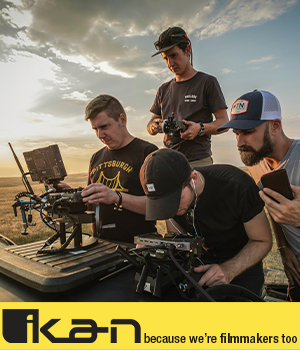- Forum
- General Discussion | Introductions | Off Topic Forum
- Photography General Discussion
- Afraid to shoot in RAW
Afraid to shoot in RAW
-
 Topic Author
Topic Author
- Jen0block4
- New Kid On The Block
-
- Nikon d60
- Followers: 8
- Posts: 34
-
Points:
0
Post #119701
Can anyone give me like a step by step on shooting in RAW? Like as far as what to save it as to upload online, what the main things are that need to be adjusted in PP on RAW files... All that good stuff
I would like to get over this fear as I get more serious with photography... I'm doing some "free" work for friends. Once I have my portfolio built up a bit, then I plan on going further with it...
-
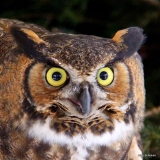
- Baydream
- Moderator
-
- Canoni/60D/70D/5DmkIII
- Followers: 388
- Posts: 11185
-
Points:
7278
Post #119707
You must use software that identifies your version.
First step, SAVE a copy to another folder. Once you edit and save, it will NOT be a RAW file. Save intermediate edits as TIFF or similar that do not lose data. Once you have your final version, save as jpeg for printing or web.
Remember, once you save the RAW will. it will no longer be RAW and data is lost.
Adjust white balance, contrast, colours (saturation/hue, etc.) and sharpness.
Shoot, learn and share. It will make you a better photographer.
fineartamerica.com/profiles/john-g-schickler.html?tab=artwork
-
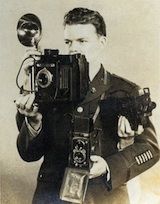
- MLKstudios
- Banned
-
- D800 ;-)
- Followers: 72
- Posts: 4480
-
Points:
2
Post #119708
HTH
www.adobe.com/products/photoshop/extend....2.html?promoid=DNRIB
Matthew L Kees
MLK Studios Photography School
www.MLKstudios.com
[email protected]
"Every artist, was once an amateur"
-
 Topic Author
Topic Author
- Jen0block4
- New Kid On The Block
-
- Nikon d60
- Followers: 8
- Posts: 34
-
Points:
0
Post #119714
Baydream wrote: Begin by shooting RAW+jpeg. That will give you the immediate advantage of seeing the "camera-adjusted" version and the RAW. Depending on your camera, the suffix will vary (Nikon NEF, Canon CR2, etc.)
You must use software that identifies your version.
First step, SAVE a copy to another folder. Once you edit and save, it will NOT be a RAW file. Save intermediate edits as TIFF or similar that do not lose data. Once you have your final version, save as jpeg for printing or web.
Remember, once you save the RAW will. it will no longer be RAW and data is lost.
Adjust white balance, contrast, colours (saturation/hue, etc.) and sharpness.
Ok thats a good idea, shoot raw + jpeg. I'm a little confused about the other part... once I save raw, it will no longer be raw? I heard a raw file is untouched. Like I can't edit/save to a raw.
-

- Baydream
- Moderator
-
- Canoni/60D/70D/5DmkIII
- Followers: 388
- Posts: 11185
-
Points:
7278
Post #119716
Correct. That's why you save a copy of the RAW file BEFORE you start editing. Think of it like your negative, once you alter a negative, you can not go back and "undo" it. Photoshop, Corel, etc. have looseless format in which to save as well as TIFF. Jpeg is called "loosey" since it compresses that data (finds 500 pixels of white and stores am algorithm that indicates that). Each edit and SAVE compresses the data further, so your FINAL save should be in pjeg.Jen0block4 wrote:
Baydream wrote: Begin by shooting RAW+jpeg. That will give you the immediate advantage of seeing the "camera-adjusted" version and the RAW. Depending on your camera, the suffix will vary (Nikon NEF, Canon CR2, etc.)
You must use software that identifies your version.
First step, SAVE a copy to another folder. Once you edit and save, it will NOT be a RAW file. Save intermediate edits as TIFF or similar that do not lose data. Once you have your final version, save as jpeg for printing or web.
Remember, once you save the RAW will. it will no longer be RAW and data is lost.
Adjust white balance, contrast, colours (saturation/hue, etc.) and sharpness.
Ok thats a good idea, shoot raw + jpeg. I'm a little confused about the other part... once I save raw, it will no longer be raw? I heard a raw file is untouched. Like I can't edit/save to a raw.
Shoot, learn and share. It will make you a better photographer.
fineartamerica.com/profiles/john-g-schickler.html?tab=artwork
-

- MLKstudios
- Banned
-
- D800 ;-)
- Followers: 72
- Posts: 4480
-
Points:
2
Post #119717
To output a RAW file for web or print, the two need to be combined (typically as a JPEG file).
The original RAW image data remains untouched.
Matthew
Matthew L Kees
MLK Studios Photography School
www.MLKstudios.com
[email protected]
"Every artist, was once an amateur"
-
 Topic Author
Topic Author
- Jen0block4
- New Kid On The Block
-
- Nikon d60
- Followers: 8
- Posts: 34
-
Points:
0
Post #119720
Baydream wrote:
Correct. That's why you save a copy of the RAW file BEFORE you start editing. Think of it like your negative, once you alter a negative, you can not go back and "undo" it. Photoshop, Corel, etc. have looseless format in which to save as well as TIFF. Jpeg is called "loosey" since it compresses that data (finds 500 pixels of white and stores am algorithm that indicates that). Each edit and SAVE compresses the data further, so your FINAL save should be in pjeg.Jen0block4 wrote:
Baydream wrote: Begin by shooting RAW+jpeg. That will give you the immediate advantage of seeing the "camera-adjusted" version and the RAW. Depending on your camera, the suffix will vary (Nikon NEF, Canon CR2, etc.)
You must use software that identifies your version.
First step, SAVE a copy to another folder. Once you edit and save, it will NOT be a RAW file. Save intermediate edits as TIFF or similar that do not lose data. Once you have your final version, save as jpeg for printing or web.
Remember, once you save the RAW will. it will no longer be RAW and data is lost.
Adjust white balance, contrast, colours (saturation/hue, etc.) and sharpness.
Ok thats a good idea, shoot raw + jpeg. I'm a little confused about the other part... once I save raw, it will no longer be raw? I heard a raw file is untouched. Like I can't edit/save to a raw.
Well I never developed a negative so I don't know how that works, but here I thought you can edit a raw and later down the road open that same raw and edit it again. But from my understanding of what you are saying, that is not possible?
-
 Topic Author
Topic Author
- Jen0block4
- New Kid On The Block
-
- Nikon d60
- Followers: 8
- Posts: 34
-
Points:
0
Post #119724
MLKstudios wrote: I convert RAW files to Adobe's DNG format. Then edit those in Lightroom.
HTH
What is DNG?
Oh and what is HTH?...is see you have that in alot of your posts.
-

- MylilAngel
- New Kid On The Block
-
- Nikon D90
- Followers: 52
- Posts: 40
-
Points:
0
Post #119727
-

- MLKstudios
- Banned
-
- D800 ;-)
- Followers: 72
- Posts: 4480
-
Points:
2
Post #119729
HTH = Hope This Helps
Matthew L Kees
MLK Studios Photography School
www.MLKstudios.com
[email protected]
"Every artist, was once an amateur"
-

- KCook
- Photo Elder
-
- Canon EOS 50D and Olympus E-P5
- Followers: 1325
- Posts: 5410
-
Points:
32913
Post #119734
My initial RAW trials were pretty much the same outcome. Very disappointing, especially after all the wildly pro RAW topics I had read online. That initial editing effort seemed pointless because the editor I was using was so basic, lacking most of the features of Adobe's Elements. This forced me to do a TIF conversion almost immediately in the PP workflow. TIF works nearly as well as RAW, but expect enormous file sizes!I tried it once... and I couldn't find the raw file to edit it... then I couldn't figure out what the best file format was to save it as since I know that JPEG can sometimes mess things up... Also, I didn't really notice that much of a difference between the original jpeg and the raw version of the picture either...
Short version: my old editing software was not up to the job. That era is coming to a close, as even the freebie editor downloads can now handle RAW. Which was not always the case.
Typically the RAW version will not look any better than the JPG version. The RAW version yields to PP better than the JPG version. Run a JPG through some heavy duty PP and the result becomes muddy (on close examination). Not so much of a problem with RAW. If you keep the PP light, less benefit from RAW. More casual photographers may do very little PP, and could well be perfectly happy with JPG.
Try RAW+JPG as a transition phase. Once you have the PP side of your game up to RAW speed, expect to just shoot RAW alone. At least that was my experience, I now shoot RAW only. But it was a rough curve to climb, due mostly to my lame software. So I don't blame anybody for sticking with JPG, I cannot walk in their shoes!
Kelly Cook
-
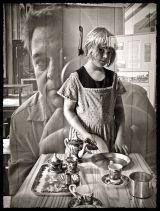
- Henry Peach
- Apprentice
-
- I currently use a 5DII or Sony Nex-3 most of the time.
- Followers: 50
- Posts: 2925
-
Points:
16
Post #119747
Jen0block4 wrote: ...I thought you can edit a raw and later down the road open that same raw and edit it again.
That is correct. I go back and reprocess raw files all the time. As MLK said the raw ingredients remain untouched, they are assembled from scratch each time according to the attached recipe file. The recipe file can be changed or reset at will, but the original raw data stays the same. If you save the file as a tiff or jpeg after processing you are making a copy. I've never used software that would overwrite the original raw file.
-
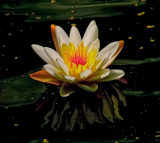
- robbie
- Apprentice
-
- D200,665nm D200,720NM D70,D7000
- Followers: 72
- Posts: 2768
-
Points:
25
-

- Henry Peach
- Apprentice
-
- I currently use a 5DII or Sony Nex-3 most of the time.
- Followers: 50
- Posts: 2925
-
Points:
16
Post #119763
Jen0block4 wrote: ... I couldn't find the raw file to edit it...
You will need software that can read your camera's raw file. Hpefully it came with the camera or is available from you camera manufacturer's website. Raw is not a specific file format like jpeg or tiff. It can vary from model to model even within the same brand line. Some processing software can be upgraded to accept more recent cameras. Some can't; Adobe stops providing new raw support when they move on to the next version of Photoshop. They will give you the Adobe DNG Converter for free, and as MLK said it can be used to convert raw to dng (Adobe's attempt to standardize the raw file), and almost all raw processing software will work with dng. I just bought a Sony NEX-3, and my old CS4 Photoshop won't process it, so I convert it to dng, and then delete the original raw files. CS4 will still read the raw files from my other cameras.
Jen0block4 wrote: ...then I couldn't figure out what the best file format was to save it as since I know that JPEG can sometimes mess things up...
I save as jpeg as my final step. If I can do all the processing in the raw processor then I export as a jpeg. If I have to go into some other sort of processing software, and need to save before finishing or at a particular step I save as tiff to avoid jpeg compression. A little jpeg compression isn't even noticeable. The problem occurs when the same file is saved as a jpeg, opened and processed, re-saved as a jpeg, opened and processed again, re-saved as a jpeg again, etc...
Jen0block4 wrote: Also, I didn't really notice that much of a difference between the original jpeg and the raw version of the picture either...
Then it was processed similarly as the in-camera software was processing it. The raw processing software that came with your camera probably has settings to make it duplicate the in-camera processing. For instance Canon DPP has the same picture styles as their cameras. I can click one and it processes the raw file just like if I had the camera set to jpeg and that picture style. The thing about raw is that it gives me more room to make my own picture style if I want to.
Jen0block4 wrote: Can anyone give me like a step by step on shooting in RAW? Like as far as what to save it as to upload online, what the main things are that need to be adjusted in PP on RAW files... All that good stuff
It's going to depend on your software. Just google "raw processing tutorial {insert your software here}". I highly recommend Adobe Lightroom. I think it's affordable for what it provides. I think it's pretty easy to figure out, and there are a billion resources for learning it out there. I've heard Adobe Elements now offers raw processing, and I think it's even cheaper, but I've got no experience with it.
Jen0block4 wrote: I would like to get over this fear as I get more serious with photography...
Raw processing is like learning to develop your own film instead of dropping it off for the automatic lab machines. At first you probably won't do as good of a job as the machines do. The reason why doing it yourself is better is because there are a lot more options, and with practice you should be able to out-perform the auto-machine. Another advantage is that if you are using a calibrated monitor then what you see is what you get. You can just adjust until it looks good to your eye. Doing the processing in-camera requires setting the processing parameters before you make the exposure. At least with older cameras. I think some of the new cameras have a process on command feature.
On the other hand if you are content with the provided in-camera processing software there is nothing wrong with using it. I like Adobe Camera Raw because it allows for a whole lot more control and options than the processing software that comes installed in my Canon cameras. But there are plenty of excellent photographers who are content with the in-camera processing and shoot jpeg. Just like with film there were plenty of serious photographers who dropped their film off at the lab to be finished by machines rather than doing it themselves in the darkroom.
- Forum
- General Discussion | Introductions | Off Topic Forum
- Photography General Discussion
- Afraid to shoot in RAW
Latest Reviews
The Canon EOS R100 is an entry-level mirrorless camera introduced in 2023. But just because it’s an entry-level camera doesn’t mean it’s a bare-bones camera. Find out why in this review!
Nikon’s retro-looking Nikon Zfc is anything but retro. Under its classic body is a host of features and amenities that make it a worthwhile compact mirrorless camera for 2024.
The Canon EOS R50 is one of the newest R-system cameras from Canon. Is it worth your money? Find out all the details you need to know in this comprehensive review.
The Sony FE 70-200mm f/2.8 GM OSS II is Sony’s flagship mirrorless zoom lens. As such, it’s loaded with features and has a top-shelf build quality that makes it a top pick!
Forum Top Posters
-
1Scotty 6 posts
-
2TCav 5 posts
-
3Foggy 4 posts
-
4No Show 3 posts
-
5CaptNemo 2 posts
-
6Roger Lang 2 posts
-
7Otto F 2 posts
-
8Fitch 2 posts
-
9Kenta 2 posts
-
10Pork Express 2 posts
Latest Articles
Using leading lines in photography helps improve the composition by drawing viewers in and leading their eye from the foreground to the background. Explore some fine examples of this in this guide!
The Insta360 has one of the best lineups of action cams and 360-degree cameras. With these Insta360 accessories, you can elevate your photography and videography game!
Creating impactful photos of landscapes depends on many factors, not the least of which is your talent behind the lens. This guide explores other elements required for the best product.
The Canon EOS R100 is an entry-level mirrorless camera introduced in 2023. But just because it’s an entry-level camera doesn’t mean it’s a bare-bones camera. Find out why in this review!
Are you ready to upgrade your camera? Before buying new, you might consider the value of purchasing used gear to save money.
The Olympus OM-D E-M10 Mark IV is a micro four thirds camera released in 2020. It’s an entry-level system along with the OM-D E-M5 Mark III. Use this guide to determine which one is best for you!
Blue hour photography might not be as well known as golden hour photography, but it is every bit as good a time to create epic images of landscapes. Learn how in this quick tutorial!
Nikon’s retro-looking Nikon Zfc is anything but retro. Under its classic body is a host of features and amenities that make it a worthwhile compact mirrorless camera for 2024.










